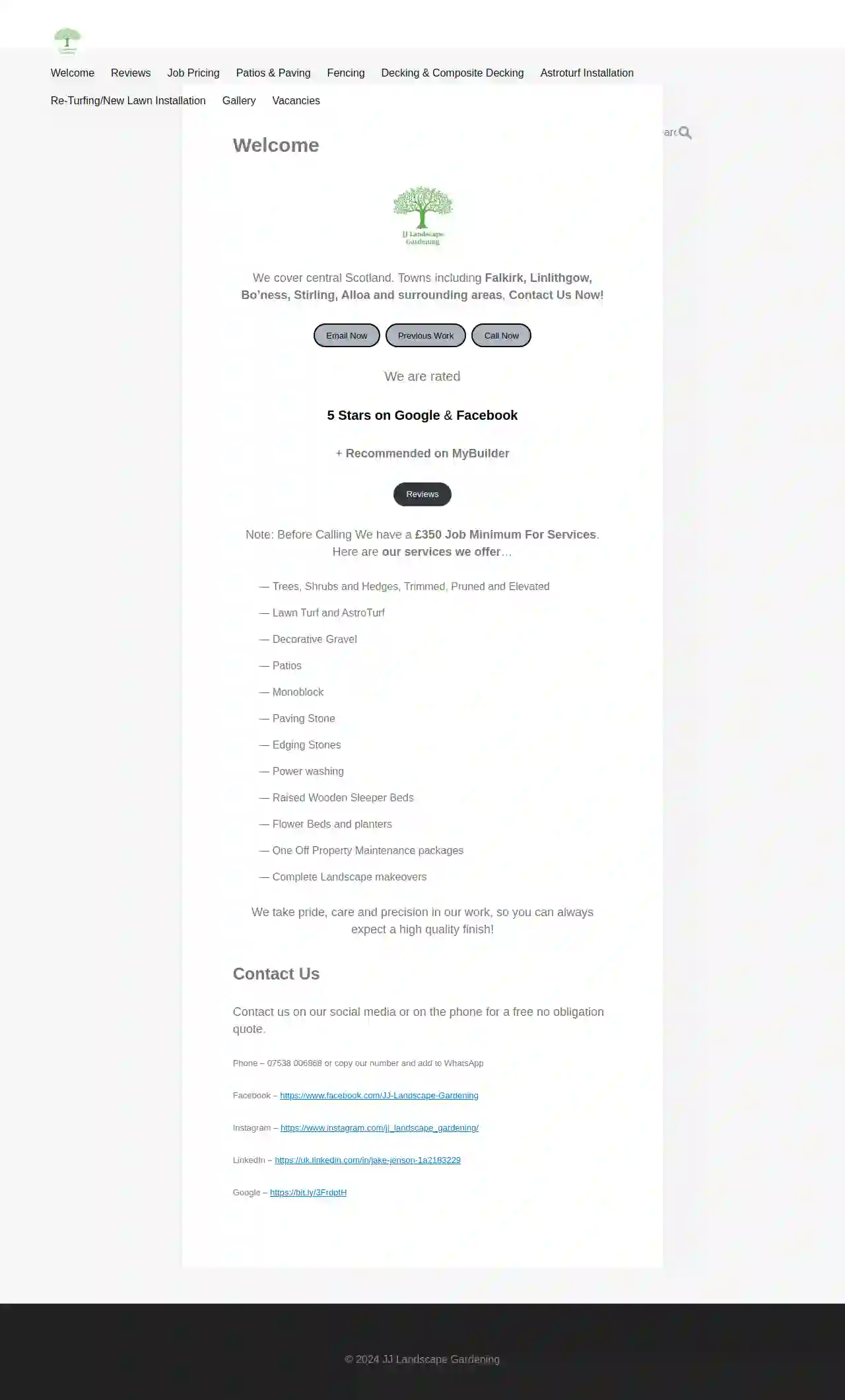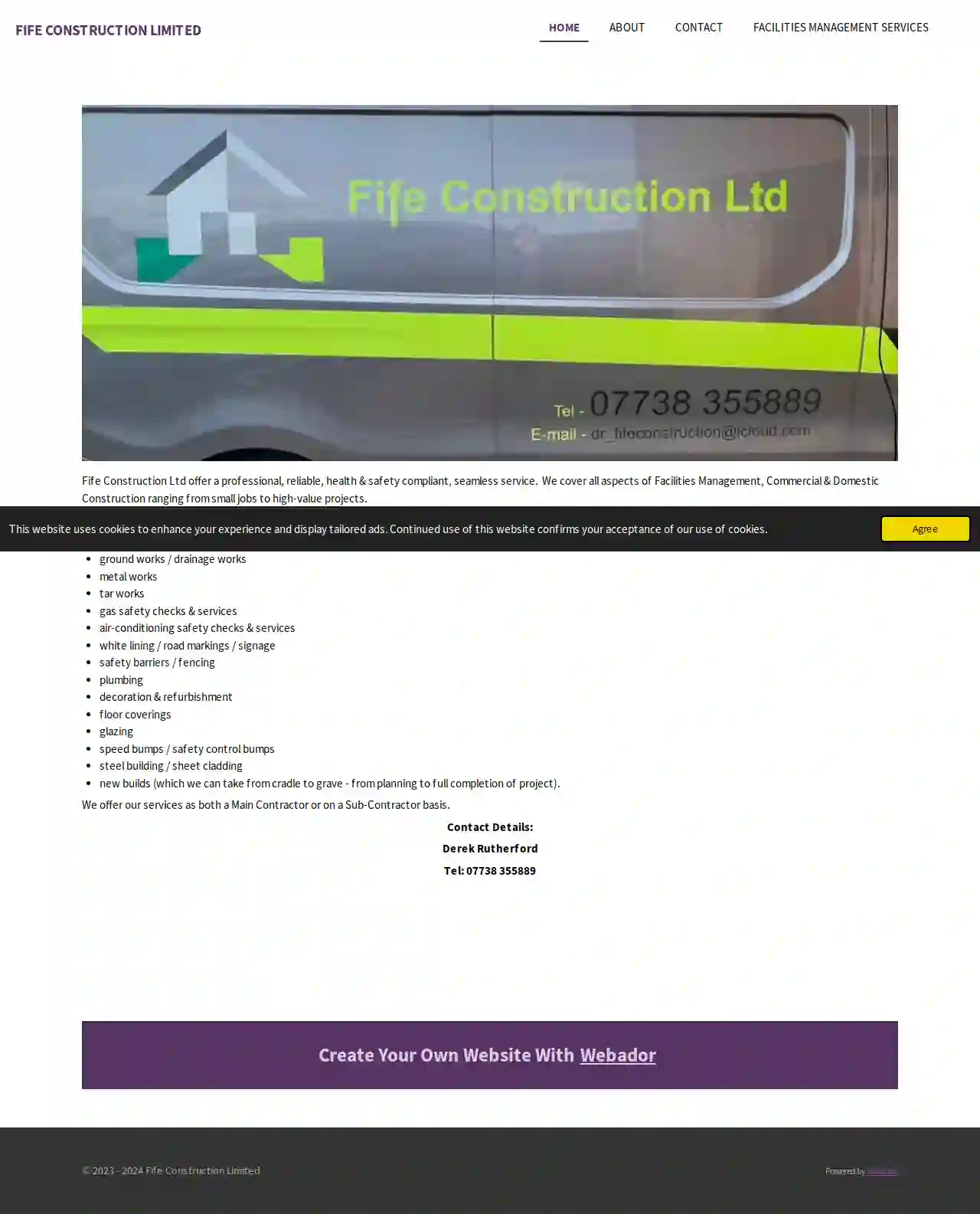Demolition Contractors Rosyth
Top 10 Demolition Experts in Rosyth
Receive up to 3 Building Demolition quotes for your project today! Compare profiles, reviews, accreditations, portfolio, etc... and choose the best offer.

Keystone Construction
Edinburgh, GBWelcome to Keystone Construction A Specialist Groundworks Contractor Based in Scotland About Us Keystone Construction is a professional groundworks contractor, based in Edinburgh and working with partners throughout Scotland. What Keystone Can Do For You At Keystone Construction, we pride ourselves on delivering projects to the highest possible construction standards, in an efficient, cost-effective way. We are accomplished in a diverse range of groundworks specialities including: Groundworks Services We offer a comprehensive range of groundworks services, including: Earthworks / Clearance Site Clearance Bulk Cut & Fill Bulk Soil Import / Export Ground Remediation Foundations Strip, Pad & Raft Foundations Deep Pile Foundations Complex Engineered Solutions Soil Improvements Concrete Works Suspended Floor Slabs Power-Floated Concrete Floors Retaining Walls Formwork, Reinforcing, Placing Plotworks Utility Installation Hard Landscaping Street Lighting Roads / Drainage / SUDS Road Formation & Surfacing SUDS Ponds All Concrete, Plastic & Clay Piping Deep Drainage & Access Chambers Building Blockwork & Underbuilding Superstructure Brick & Blockwork For Housing Developments If your next project requires any of the services above, feel free to get in touch to discuss your specific needs. Experience Matters Specialists in Complex Projects The team at Keystone Construction has a wealth of experience in delivering complex groundworks projects. We take pride in our ability to work in tight and confined spaces, for example, on sites in close proximity to water, sites with impeded access and projects involving listed buildings in areas of historical significance. This experience, together with a continuing investment in the latest plant, machinery & technology, makes Keystone Construction a compelling choice when it comes to complex groundworks projects.
- Services
- Why Us?
- Gallery
Get Quote
Avenue North Limited
Unit 71, 44-46 Morningside Road, Unit 71 44-46 Morningside Road Edinburgh, Edinburgh, EH10 4BF, GBWho we are Avenue North is an Edinburgh based construction company, specializing in new build residential works, refurbishment projects and commercial interiors. We are a team of construction professionals and trades people with the skills, experience and track record of delivering high end quality projects. What we do We manage and deliver new build construction and refurbishment works within residential and commercial sectors for private clients, investors and developers. We have the knowledge and capability to manage complex and technically challenging projects. An appreciation of conservation and preservation enables us to provide a sympathetic and understanding approach when working on listed buildings.
- Services
- Why Us?
- Our Team
- Gallery
Get Quote
CLS Scotland
53 reviews13c Hopetoun Lane, Bathgate, EH48 1PP, GBArtificial Grass Specialists No more mud, No more mess, No more mowing!!! Synthetic lawns by CLS Scotland specialise in creating gardens that transform the way you use your outdoor space. Whether you have grown tired of the mud and mess your pets bring into your home, from your real lawn, or you want a dry, safe space for your kids to play. It may be you have poor drainage , your garden is shaded by trees and your real lawn won’t grow, or you just want to enjoy your garden, rather than spending your free time mowing the lawn. No matter the reason, synthetic turf is an effective, low maintenance solution that will give you that lush green lawn you have always wanted-365 days a year. Artificial grass is so versatile, it’s pet friendly, child friendly, hard wearing, requires very little maintenance, and can even add value to your home . At CLS Scotland, we have years of experience installing artificial lawns, and are constantly striving to offer our customers an unrivalled service from start to finish. Why choose Synthetic Lawns by CLS Scotland The highest level of care is used when installing your new lawn A fixed price detailed quote, so you know exactly how much you’ll pay Up to 10 year guarantee on all our artificial lawns and installations Expert advice to help you choose the best lawn for your needs 1st class customer service Only quality products are used 10 million pound public liability insurance Wide range of artificial grass available Gardens designed to suit individual needs 100% customer satisfaction Strong ethos to health & safety Amazing end results
- Services
- Why Us?
- Our Team
- Testimonials
- Gallery
Get Quote
East of Scotland Drainage Services
4.821 reviews144 Old Town, Broxburn, EH52 5HJ, GBEast of Scotland Drainage Services ESDS is a plumbing and drainage business with a difference. We put customer satisfaction and service excellence front and centre in everything we do. ESDS is a new business but the people behind the name are no novices bringing over 30 years of industry experience to the business. Servicing Edinburgh, Lothians, Fife and the Borders ESDS is available 24 hours a day, 7 days a week, 365 days a year. So no matter when you need us we're on hand ready to take your call and respond immediately. With some of the most competitive rates in the area we have the training and experience to carry out jobs from start to finish. We'll find the blockage and clear it, then investigate to find the cause and carry out appropriate repair work to prevent a reoccurance. Our Team All of our highly trained and dedicated staff are friendly, courteous, and work in a clean and tidy manner. They are backed up by the very latest equipment which is always kept clean and well maintained.
- Services
- Why Us?
- Testimonials
- Gallery
Get Quote
GM Land Solutions
GM Land Solutions, Dean Farm, Dunfermline, KY12 0TQ, GBWho we are Leading the way in site, tree and vegetation clearance in central Scotland At GM Land Solutions, we excel in Land, Tree & Vegetation Clearance and a number of other land based services. Since 2004, founder Gavin Mathison has built strong relationships with a wide range of commercial clients, making GM Land Solutions the ‘go to’ contractor. We look forward to offering you the same high level of
- Services
- Why Us?
- Gallery
Get Quote
JJ Landscape Gardening
4.928 reviewsEdinburgh, GBJJ Landscape Gardening: Transforming Your Outdoor Spaces JJ Landscape Gardening is a reputable landscaping company serving central Scotland, including Falkirk, Linlithgow, Bo’ness, Stirling, Alloa, and surrounding areas. We are dedicated to providing high-quality landscaping services that enhance the beauty and functionality of your outdoor spaces. Our team of experienced and skilled landscapers takes pride in delivering exceptional results, ensuring a meticulous and professional finish for every project. We understand that your garden is an extension of your home, and we strive to create a space that reflects your unique style and needs. From simple lawn maintenance to complete landscape makeovers, we offer a wide range of services to cater to your specific requirements. Our services include: • Trees, Shrubs and Hedges: Trimming, Pruning, and Elevation • Lawn Turf and AstroTurf Installation • Decorative Gravel • Patios • Monoblock Paving • Stone Edging • Power Washing • Raised Wooden Sleeper Beds • Flower Beds and Planters • One-Off Property Maintenance Packages • Complete Landscape Makeovers We are committed to providing excellent customer service and exceeding your expectations. Contact us today for a free, no-obligation quote and let us help you create the outdoor oasis you've always dreamed of.
- Services
- Why Us?
- Gallery
Get Quote
Fife Construction Ltd
32 reviewsEdinburgh, GBAbout Fife Construction Limited With over 25 years of experience in the industry, Fife Construction Limited offers top-class workmanship and attention to detail at a price to suit all budgets. We are a professional company that can undertake all aspects of facilities management (which we currently provide to major commercial companies throughout Scotland) and/or commercial or domestic construction work. Our dedicated team can offer you a solution for all your facilities management / building & construction needs. Our highly experienced team will consult you at every stage of the process/project to ensure that your needs are met perfectly (high quality, on-budget & to time-scale). We provide an extremely high-quality, safety-conscious & customer-friendly service at all times! We offer our services on a Main Contractor or Sub-Contractor basis.
- Services
- Why Us?
- Our Team
- Gallery
Get Quote
Wilson Construction Ltd
55 reviewsWilson House, Kilda Road, Wilson House Kilda Road Perth, Perth, PH1 3FL, GBWilson Construction (Perth) Ltd. Wilson Construction (Perth) Ltd is a civil engineering, groundwork and paving company based in Perth and has completed projects for our clients all over Tayside and Scotland. Our priority is to complete projects to a high quality of workmanship within budget and on time in a safe working environment. Wilson Construction was established in 1996 and is a family run construction company that employs a dedicated, skilled workforce, many of whom have worked with us for several years and who receive continual training to ensure all our work is carried out safely and efficiently. We have gained specialist knowledge and expertise in drainage, concrete, paving, groundworks and civil engineering, enabling us to complete a vast range of projects throughout Tayside and Scotland. Wilson Construction has an excellent reputation for finishing our projects and services safely, on time and within budget across public, commercial and private sectors. Wilson Construction (Perth) ltd. is committed to ensuring a safe working environment and the health and safety of our employees, the public and our clients is very important to us. We are proud of our safety record to date and continue to invest in training our employees. Site managers hold CITB Construction SMSTS certificates Foremen hold CITB Construction SSSTS certificates All employees hold CSCS cards and are trained in First Aid All plant operators hold NPORS certification SWQR streetworks certification We regularly audit our health and safety systems to keep them up to date with new legislation and practices.
- Services
- Why Us?
- Gallery
Get Quote
ONYX Concrete
4.912 reviewsEdinburgh, GBAbout Us At Onyx Concrete Contractors, we are a dedicated team of professionals servicing Chicago, IL and surrounding areas with top-notch concrete solutions. With our expertise in both residential and commercial projects, we pride ourselves on delivering high-quality workmanship, exceptional customer service, and innovative concrete designs that exceed expectations. What we are best at Our Services
- Services
- Why Us?
- Testimonials
- Gallery
Get Quote
Baseline Construction LLC
510 reviews3319 Pleasants Road, Powhatan, 23139, GBDependable grading, drainage and cleanup solutions. Baseline Construction is a grading, drainage, and cleanup solutions provider. Built on a foundation of 20 years of land surveying experience in the construction industry we are committed to providing fast, reliable, and professional service. Our goal is to create long term relationships with you as our client providing service you can depend on no matter the size of the job. With a foundation in surveying we know grading from start to finish Luke Quinlan, President of Baseline Construction LLC, has over 20 years of experience in the construction industry. Born in Sarasota Florida and raised since age two in Chesterfield Virginia, Luke has not only experienced first hand the rapid growth of the Greater Richmond Area but has been a part of it. Luke’s extensive knowledge of the industry is derived from his experience running and maintaining equipment and working pipe crews for top-rated construction companies and actually laying the foundation for many residential and commercial properties in the area as a surveyor for the past 15 years. Luke knows there is a need for dependable contractors in the commercial construction industry that will get the job done, quickly and correctly, the first time.With the housing market experiencing unprecedented times, whether buying, selling or flipping a home that requires extensive clean-up, Luke knows reliable service that can match the rate of the current turnover is crucial.As a husband and a new Dad to an amazing little boy residing in Powhatan Virginia, he knows even a small residential job can be a lot of work for any family. Leave the heavy lifting to him, so you can spend quality time doing the things you enjoy.
- Services
- Why Us?
- Our Team
- Gallery
Get Quote
Over 13,059+ Excavation Contractors on our directory
Our excavation providers operate in Rosyth and beyond!
ExcavationHQ has curated and vetted Top Excavation Contractors near Rosyth. Find a top & reliable pro today.
Frequently Asked Questions About Demolition Contractors
- Size and Complexity of the Structure: Larger and more complex structures, such as multi-story buildings, require more time, labor, and specialized equipment, increasing costs.
- Type of Demolition: Different demolition methods, such as implosion, wrecking ball, or high-reach demolition, have varying costs.
- Material Disposal: Disposal fees for demolition debris can contribute significantly to the overall cost, depending on the type and quantity of materials.
- Location and Accessibility: Demolition in densely populated areas or with limited access may require more planning and specialized equipment, affecting costs.
- Hazardous Materials: The presence of asbestos, lead paint, or other hazardous materials requires specialized removal and disposal procedures, adding to the expenses.
- Project Assessment: The demolition contractor evaluates the structure, site conditions, and project requirements.
- Permitting: Obtain necessary demolition permits from local authorities.
- Site Preparation: Secure the site, disconnect utilities, and remove any valuable or reusable items.
- Hazardous Material Abatement: Professionally remove asbestos, lead paint, or other hazardous materials if present.
- Demolition: Execute the chosen demolition method, bringing down the structure safely and efficiently.
- Debris Removal and Site Cleanup: Sort, process, and dispose of demolition debris responsibly. Clean up the site to prepare it for future use.
How long does a demolition project take?
What is a demolition bond?
How much does demolition cost in the UK?
What are the steps involved in a typical demolition process?
How long does a demolition project take?
What is a demolition bond?
How much does demolition cost in the UK?
- Size and Complexity of the Structure: Larger and more complex structures, such as multi-story buildings, require more time, labor, and specialized equipment, increasing costs.
- Type of Demolition: Different demolition methods, such as implosion, wrecking ball, or high-reach demolition, have varying costs.
- Material Disposal: Disposal fees for demolition debris can contribute significantly to the overall cost, depending on the type and quantity of materials.
- Location and Accessibility: Demolition in densely populated areas or with limited access may require more planning and specialized equipment, affecting costs.
- Hazardous Materials: The presence of asbestos, lead paint, or other hazardous materials requires specialized removal and disposal procedures, adding to the expenses.
What are the steps involved in a typical demolition process?
- Project Assessment: The demolition contractor evaluates the structure, site conditions, and project requirements.
- Permitting: Obtain necessary demolition permits from local authorities.
- Site Preparation: Secure the site, disconnect utilities, and remove any valuable or reusable items.
- Hazardous Material Abatement: Professionally remove asbestos, lead paint, or other hazardous materials if present.
- Demolition: Execute the chosen demolition method, bringing down the structure safely and efficiently.
- Debris Removal and Site Cleanup: Sort, process, and dispose of demolition debris responsibly. Clean up the site to prepare it for future use.